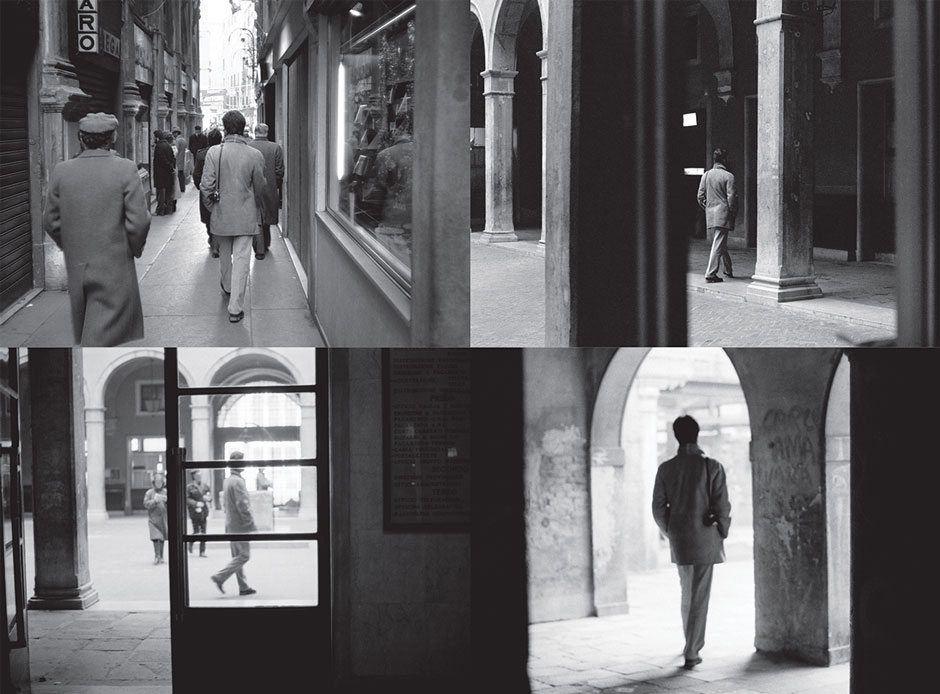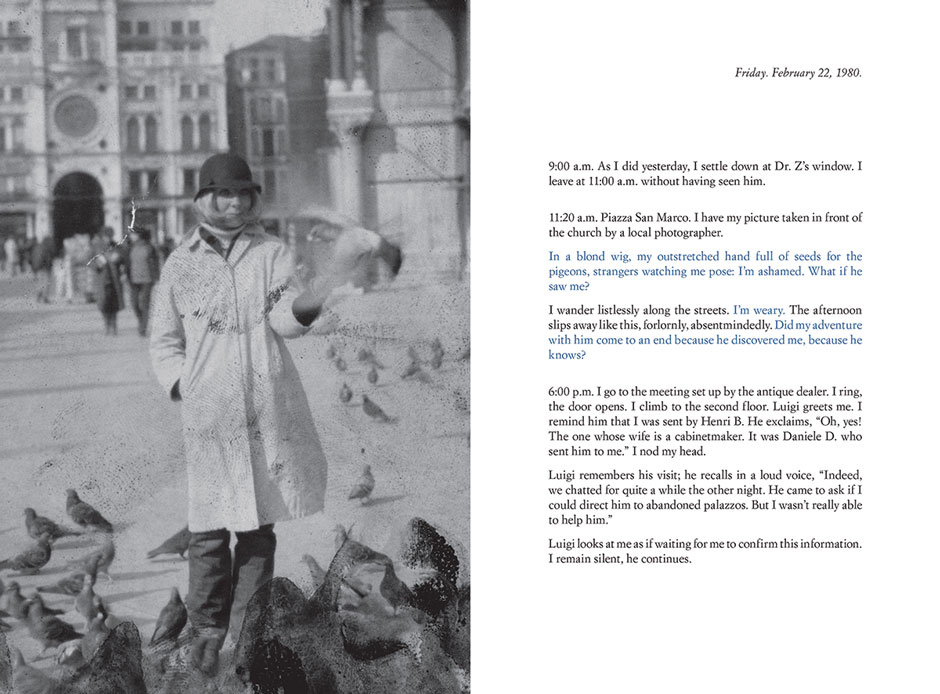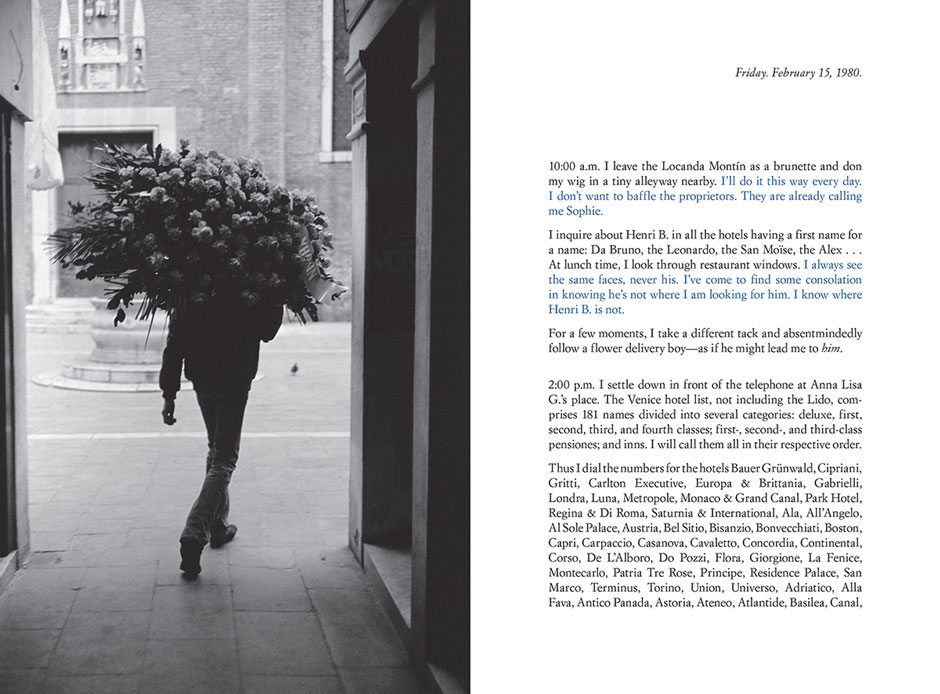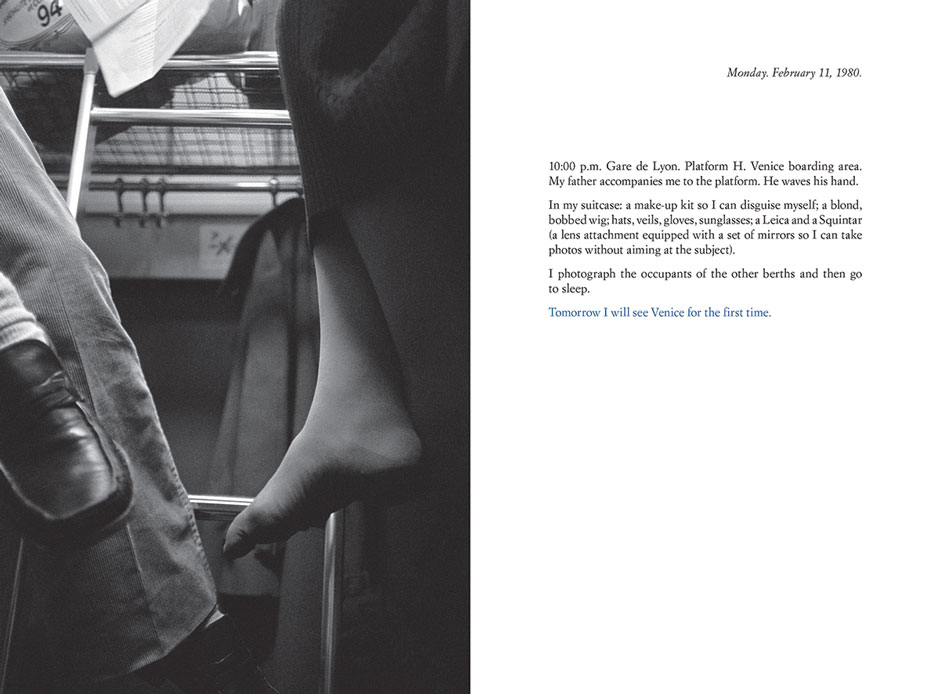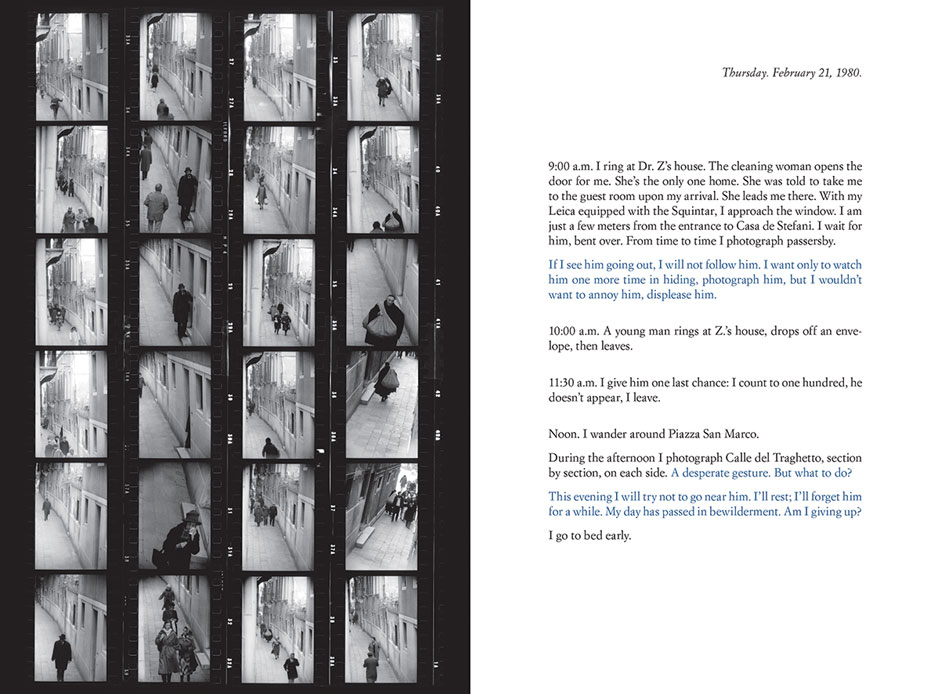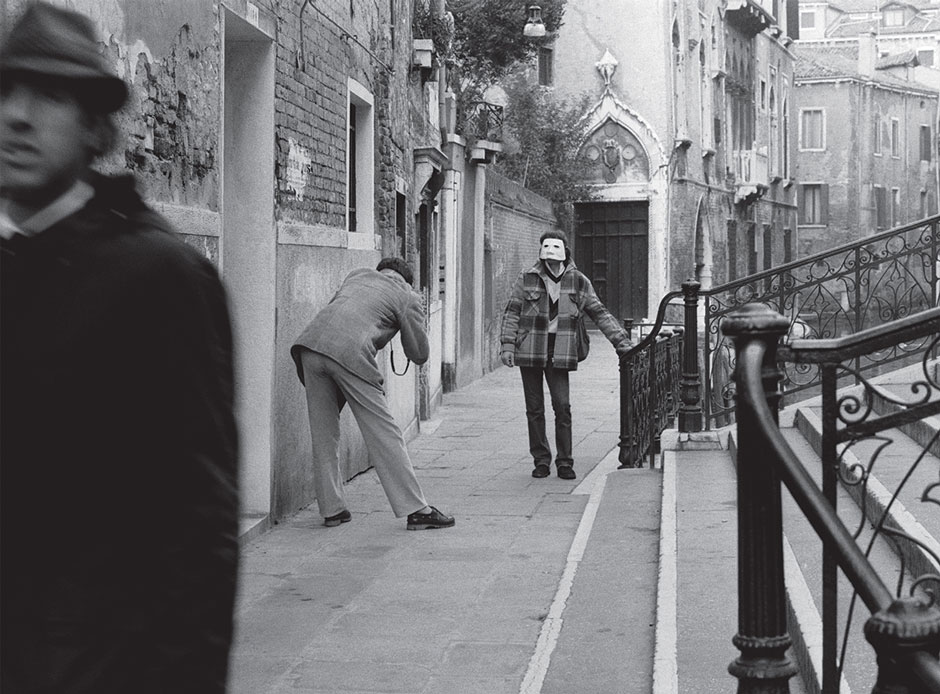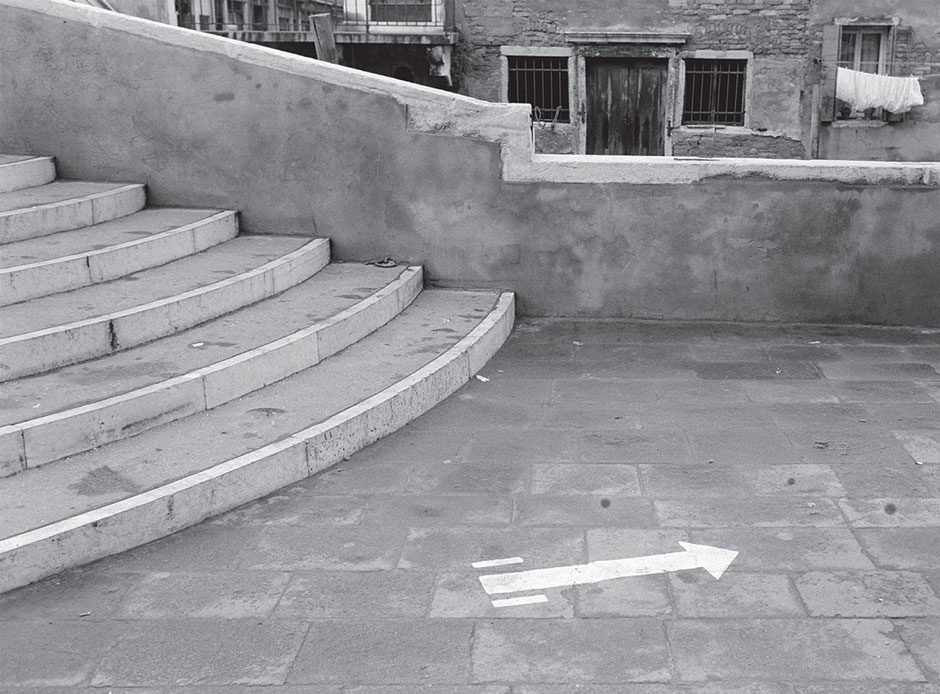In the early 1980s, the artist Sophie Calle found an address book on a Paris street, photocopied its pages, returned it to its owner, and then interviewed the people listed within to find out more about him. Calle’s inquiries were published in the French daily Liberation. Over the course of a month, readers learned about the owner, “Pierre D”: his work at a film magazine, his failures to put himself forward professionally, when and why his hair turned white.
Calle, who at 62 is one of France’s most celebrated and well-known artists, has spent her career following others. She is said to be intrusive or invasive in her work, which usually consists of fabricated encounters between the artist and others. She has photographed people sleeping in her bed, snooped around hotel rooms to document their occupants, hired strangers to interpret the letters of past lovers. (Calle’s current boyfriend, according to the Guardian, has asked that she keep him out of her work. “I agreed,” she told the newspaper, “but I may change my mind.”) In her most recent exhibition, Rachel, Monique, she projected a film recording her mother’s last moments, while, on speakers, voices read out selections from the dead woman’s diary.
The intimacy she creates, however, is not always revealing. Calle is not a documentarian; her work is often deliberately opaque. Faces are obscured. Names are changed. Information is distorted. In The Address Book, Calle crops and blurs images. Her sources recant and recoil from her questioning. Calle herself wavers about her project. “Suddenly, I am afraid of what I am doing.” What’s most telling is often what is absent. It was the address book’s owner who divulged his own identity, when he threatened to sue Calle and asked Liberation to publish a nude picture of her in retaliation. In her pursuit of strangers, Calle presents a kind of artistic Zeno’s paradox: the closer you get to someone else, the more you realize the distance separating you.
Siglio Press, a small publishing house in Los Angeles, has been rereleasing Calle’s artist books. Most recently, they’ve redesigned Suite Vénitienne, an early project of Calle’s. In 1980, the artist tried to follow and photograph a man on the street but quickly lost sight of him. That night, she ran into him at a party. The man told Calle he was going to Venice. She decided to pursue him there.
Calle spends thirteen days looking for and trailing Henri B. around the city. She rings hundreds of hotels; she thinks of bribing the police. At last, she finds Henri B.—he’s been staying in a pensione a hundred meters from her own. She stands outside his hotel and watches as he comes and goes. When he tours Venice with a woman, she shadows the couple. “He points toward the canal as if to show something to the woman. I take a picture in the same direction.”
The Siglio edition, designed with Calle’s collaboration, is small and elegant. Black and white photographs face diary-like entries recounting Calle’s search. Interlaced maps show Calle’s itinerary throughout the city. The original italics of the text have been colored a cool blue. Much of the book has the distant tone of a field report.
The strength of the project comes from the interplay between Calle’s physical pursuit and her emotional remove. Calle doesn’t care for Henri B. She hardly seeks to know him; she barely even tries to find out why he has come to Venice. Yet proximity to her subject seems to create a kind of attachment. Calle dreams of Henri B., he “consumes” her. She has high expectations of their encounters, then worries about displeasing him. They meet. She frets it was banal. She tries to rent his former hotel room. She envisions herself sleeping in his bed. As she gets closer to Henri B., Calle must force herself to remember that it’s the project, not the man, she’s striving for. “I must not forget that I don’t have any amorous feelings toward Henri B.,” she writes. “The impatience with which I await his arrival, the fear of that encounter, these symptoms aren’t really a part of me.” Without actual affection, Calle has begun to show the signs of love.
Critics of Calle’s work often describe it as mere snooping. “A clever person whose life and art are so resolutely vicarious deserves more pity than applause,” wrote one Times reviewer. Such criticisms miss that the sense of exposure in Calle’s work is the artist’s own artifice; details may come from the lives of others, but the sense of intrusion is her creation.
Advertisement
This is clearest when it comes to an end. After her stay in Venice, Calle catches Henri B. disembarking from his train home. Among the travelers in the Gare de Lyon, he is no longer an object of desire. He just looks like another man returning from a trip. Calle expresses no fear or regret at the sight of him walking out through the station gate. As quickly as it had developed, the connection evaporates. Calle may be an excellent stalker, but the false intimacy she constructs is most powerful when she shows how easy it is to step away.
Images from this post are drawn from Suite Vénitienne by Sophie Calle, published by Siglio Press, 2015. Images and text copyrighted and provided courtesy of the artist.


